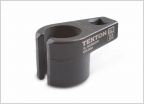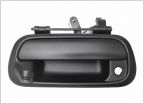-
Welcome to Tundras.com!
You are currently viewing as a guest! To get full-access, you need to register for a FREE account.
As a registered member, you’ll be able to:- Participate in all Tundra discussion topics
- Transfer over your build thread from a different forum to this one
- Communicate privately with other Tundra owners from around the world
- Post your own photos in our Members Gallery
- Access all special features of the site
Dead Short
Discussion in '1st Gen Tundras (2000-2006)' started by Sarutahiko, Nov 6, 2021.


 Dash Clock Replacement
Dash Clock Replacement Check engine light - P2195 and C1241 codes...new battery fixes it?
Check engine light - P2195 and C1241 codes...new battery fixes it? Key Fob Replacement 2002 Tundra
Key Fob Replacement 2002 Tundra Seat Covers
Seat Covers Best fitting bug deflector?
Best fitting bug deflector? Good backup camera for the first Gen
Good backup camera for the first Gen














































































